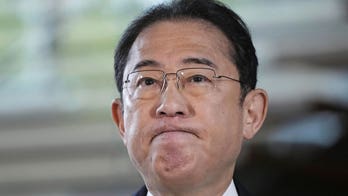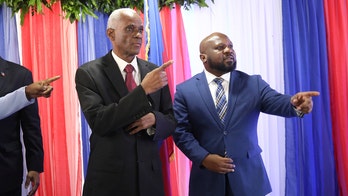Japan has issued its first-ever "megaquake advisory," warning that a devastating earthquake and tsunami could strike within the next 30 years. The advisory has sparked widespread concern and confusion, with many residents unsure of what to do or how to prepare.
Japan has been grappling with the implications of a magnitude 7.4 earthquake that struck off its coast this week, with fears of a devastating tsunami looming large. The Japan Meteorological Agency (JMA) has issued a "megaquake advisory," warning that there is a 70-80% chance of a magnitude 8 or 9 earthquake associated with the Nankai Trough within the next 30 years.
The Nankai Trough is an undersea trench that runs along the Pacific coast of Japan, and it is capable of generating powerful earthquakes and tsunamis. The last Nankai Trough quake in 1946 had a magnitude of 8.0 and killed more than 1,300 people.

Japan's Megaquake Advisory Fuels Anxiety, Fears of Tsunami
In 2013, a government disaster prevention team warned that a magnitude 9.1 Nankai Trough quake could generate a tsunami exceeding 33 feet within minutes, killing as many as 323,000 people and destroying more than 2 million buildings. The economic damage could exceed $1.5 trillion.
The JMA's "megaquake advisory" has sparked widespread concern and confusion among the Japanese public. Some towns have closed beaches and canceled annual events, while others have urged residents to review their response measures and evacuation plans.

Japan's Megaquake Advisory Fuels Anxiety, Fears of Tsunami
Experts have urged people to remain calm, but it is clear that the advisory has raised fears about a potentially catastrophic event. Many people have rushed to stock up on rice, dried noodles, canned food, bottled water, and other emergency goods, leaving shelves empty at many supermarkets in western Japan and Tokyo.
The government has canceled Prime Minister Fumio Kishida's planned trip to Central Asia and has instructed 707 municipalities seen as at risk from a Nankai Trough quake to review their preparedness.
Yoshiko Kudo and her husband Shinya said they had trouble understanding what exactly the advisory meant. "We are trying not to go overboard. Too much worry is not good," Yoshiko Kudo said.
"We don’t know how to be prepared and to still live normally like the experts tell us," said Shinya Kudo, a caregiver in his 60s.
Yoneko Oshima, walking by a major train station in Tokyo, said: "It’s scary ... They say there's a (70-80%) chance in the next 30 years, but it could be tomorrow."
In Matsuyama city on the island of Shikoku, hotels and resorts have reviewed their evacuation procedures and emergency equipment. They have received hundreds of cancelations since the advisory was issued.
Rail companies serving the region are operating their trains at slightly reduced speeds as a precaution.
The crisis management task force in the coastal town of Kuroshio in Kochi prefecture, where a tsunami as high as 111 feet was predicted in the government risk analysis, initially set up 30 shelters across town. But only two are still open following Monday's JMA statement that there has been no indication of an impending megaquake.
Higashi Osaka urged residents on the town website not to engage in "unnecessary and non-urgent" travel in case of a major quake.
The popular seaside town of Shirahama in Wakayama prefecture has closed its four outdoor hot springs, parks, and other facilities for a week. Saturday's annual fireworks festival has also been canceled.










